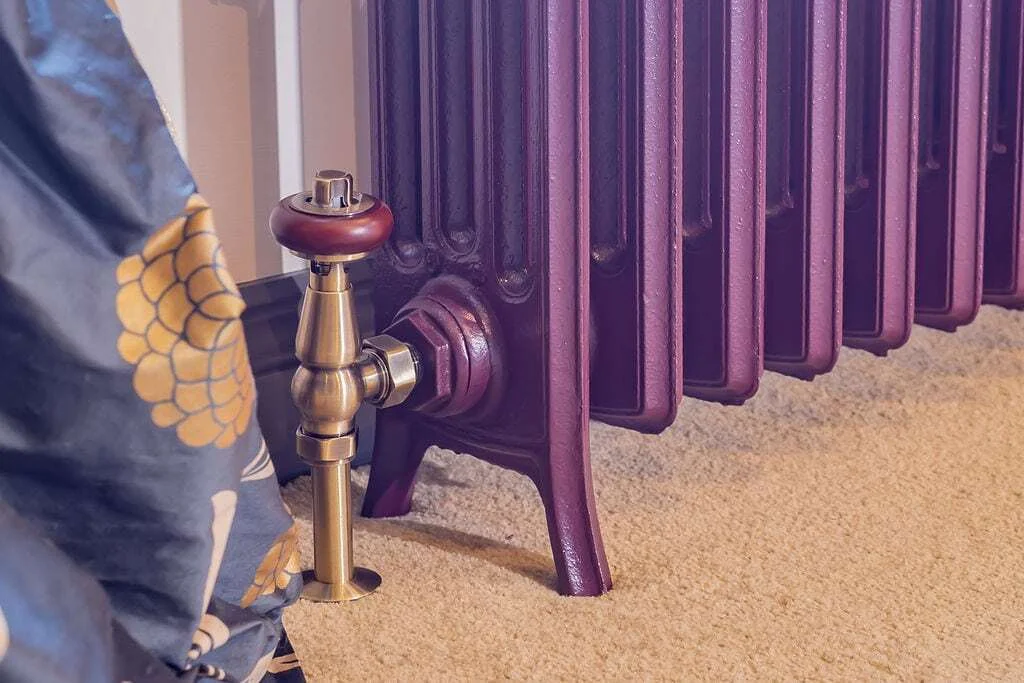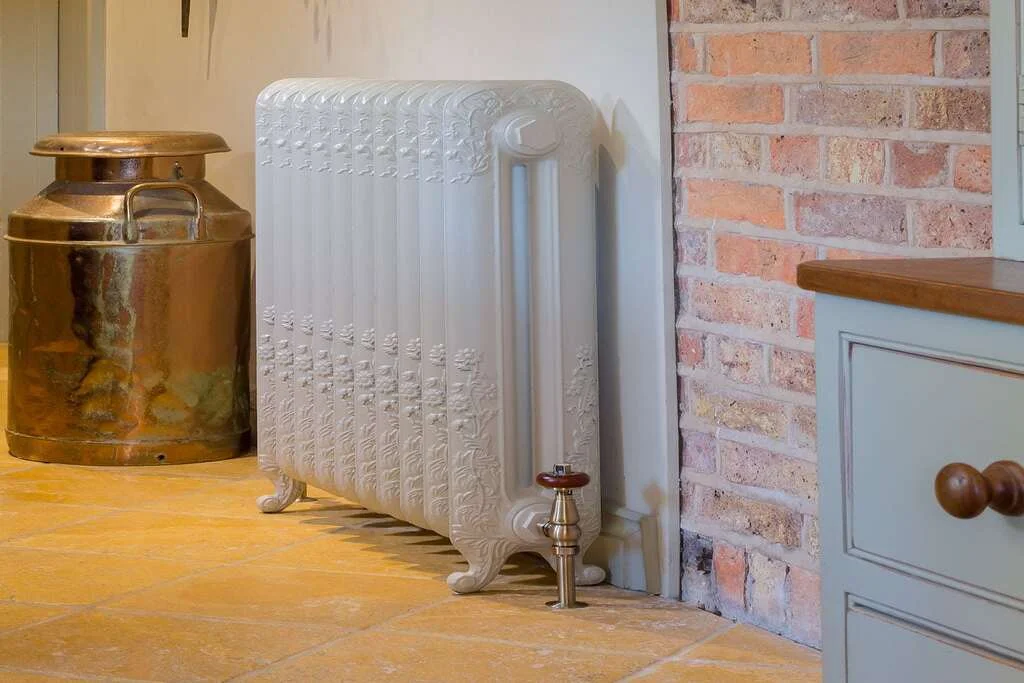-
Free Delivery Over £1000
-
0% Finance Available
-
10 Year Guarantee
-
Made In The UK

The choice of radiators for home heating is a decision that homeowners often grapple with, especially when considering the balance between aesthetics, efficiency, and longevity. Two prominent contenders in this arena are the classic cast iron radiators and their modern counterparts. This article delves deep into a comparative analysis of these two types, shedding light on their respective strengths and weaknesses.
Cast Iron Radiators: These old school radiators are often associated with vintage charm and timeless elegance. Their intricate designs and patterns can add a touch of historical grandeur to any space, making them a favourite for period homes or those seeking a retro ambiance.
Modern Radiators: Sleek, minimalist and versatile, modern radiators are designed to blend seamlessly into contemporary homes. They come in a variety of shapes, sizes and colours, offering more flexibility in terms of interior design.
Cast Iron Radiators: Known for their excellent heat retention, cast iron radiators can continue radiating warmth long after the heating source is turned off. This slow cooling process ensures a consistent temperature, providing prolonged comfort.
Modern Radiators: Typically made from materials like aluminium or steel, modern radiators heat up rapidly. While they provide instant warmth, they also cool down faster, which might require the heating system to kick in more frequently.
Cast Iron Radiators: Built to last, these radiators have a reputation for their longevity. It’s not uncommon to find cast iron radiators that are over a century old still in perfect working condition.
Modern Radiators: While they are designed to be robust, modern radiators generally have a shorter lifespan than their cast iron counterparts, often lasting between 10 to 20 years.
Cast Iron Radiators: These radiators require periodic maintenance to prevent rusting and ensure efficient operation. However, with proper care, they can last for generations.
Modern Radiators: With fewer nooks and crannies, modern radiators are easier to clean. They might require less frequent maintenance, but potential issues like leaks or malfunctions can arise over time.
Cast Iron Radiators: Their ability to retain heat for extended periods can lead to energy savings in the long run, as the heating system doesn’t need to be activated as frequently.
Modern Radiators: The rapid heating capability can be energy-intensive, but advancements in technology have led to more energy-efficient models in recent years.
Cast Iron Radiators: Being heavy, these radiators can be challenging to install and might not be suitable for all types of flooring. However, once set up, they become a permanent and valuable fixture of the home.
Modern Radiators: Lighter and more versatile, modern radiators are easier to install and can be integrated into various spaces, from bathrooms to kitchens.
Cast Iron Radiators: Their long lifespan and recyclability make them an eco-friendly choice. Moreover, the reduced need for frequent replacements means less waste and energy consumption in manufacturing.
Modern Radiators: While many modern radiators are designed with sustainability in mind, their shorter lifespan can lead to more frequent replacements, impacting the environment.
Cast Iron Radiators: The initial investment can be high, but considering their lifespan and efficiency, they often prove to be cost-effective in the long run.
Modern Radiators: Generally more affordable upfront, but potential replacements and energy consumption can add to long-term costs.
Cast Iron Radiators: One of the remarkable features of cast iron radiators is their adaptability. Even if they hail from a bygone era, they can be integrated seamlessly into modern heating systems, including those powered by renewable energy sources.
Modern Radiators: Designed with contemporary systems in mind, these radiators are inherently compatible with current heating technologies. Their design often allows for more straightforward integration with smart home systems, enabling homeowners to control heating remotely or through automated schedules.
Cast Iron Radiators: These radiators are notably heavy and bulky. While they become a statement piece in a room, their weight can be a limitation, especially in homes with structural restrictions.
Modern Radiators: Lighter and often more compact, modern radiators are suitable for a variety of spaces, including smaller rooms or apartments. Their design allows for wall mounting, freeing up floor space.
Cast Iron Radiators: The radiant heat from cast iron provides an even and consistent warmth, creating a comfortable environment. The heat emanates in all directions, ensuring no cold spots in the room.
Modern Radiators: While they heat up quickly, the distribution can sometimes be uneven, especially in larger rooms. However, advancements in design are continually improving this aspect.
Cast Iron Radiators: For homes with historical significance or those in heritage areas, having original cast iron radiators can enhance the property’s value. Additionally, there’s a burgeoning market for antique radiators, with many fetching impressive prices.
Modern Radiators: While they might not add the same historical value, a modern, energy-efficient radiator can still be a selling point for potential buyers looking for contemporary conveniences.
Cast Iron Radiators: Their robust build ensures minimal risk of leaks. However, they can become extremely hot to the touch, posing a potential burn hazard, especially to children.
Modern Radiators: Many are designed with safety in mind, featuring cooler exteriors or safety covers. This makes them a popular choice for homes with young children or pets.
Both cast iron and modern radiators have their unique sets of advantages and drawbacks. While cast iron radiators exude timeless charm and offer excellent heat retention, modern radiators provide flexibility in design and rapid heating. The choice between the two often boils down to individual preferences, budget considerations, and the specific needs of the space they’re intended for.
Ultimately, the decision rests on individual preferences, the architectural context, and specific heating requirements. By understanding the nuances of each option, homeowners can make an informed choice that ensures comfort, efficiency, and aesthetic appeal for years to come.




